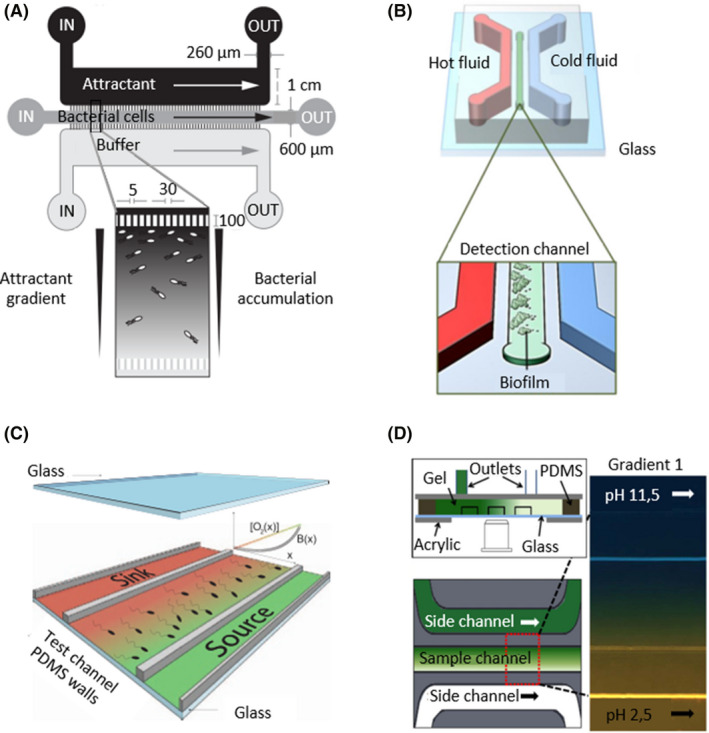Fig. 3.

Microfluidics devices with three channels can generate gradients by adding different conditions to each lateral channel.
A. The upper channel was filled with a chemical attractant, and the bottom channel was filled with buffer, generating a chemical gradient in the central channel that was filled with a bacterial solution. Bacterial accumulation was studied in the central channel to determine chemotaxis. Adapted from (Roggo et al., 2018). B. Lateral channels were filled with hot (red) and cold (blue) fluids to generate a thermal gradient in the central channel. Bacteria were seeded on the central channel, and biofilms were closely formed at higher temperatures. Adapted from (Jeong et al., 2014). C. A linear oxygen concentration flowed from the source (green) to the sink (red), creating a gradient in the test channel where the bacterial aerotactic response was analysed. Adapted from (Menolascina et al., 2017). D. Side channels were filled with solutions with different constant pH values, 11.5 (blue) and 2.5 (yellow), which diffused through the PDMS walls, generating a pH gradient in the sample channel. Adapted from (Zhuang et al., 2015). All figure panels were reproduced/adapted with permission from the corresponding publisher and/or journal. Credits for these figures are provided in the References section of the manuscript.
